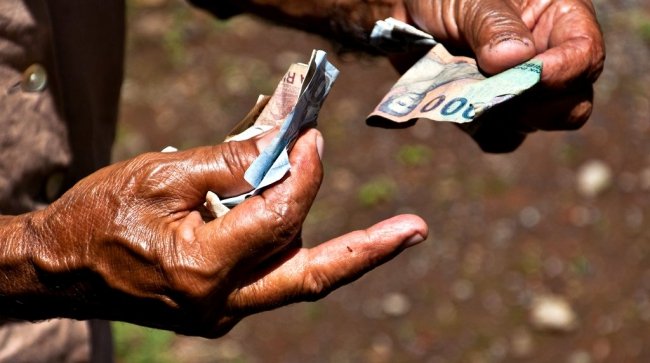You’re walking down the street, and someone comes up to you and says, “Here’s $160—no strings attached.”
What would you do? You’d be happy, right? Maybe you’d go as far as saying you’d be ecstatic.
Some people would use this money to buy the latest gadget. Others would go out for a nice meal with some friends. Others would buy the latest fashion items. Personally, I’d bank it and earn interest on it.
For people living in poverty, $160 isn’t a night out or a shopping spree. It would make a year’s worth of difference. Quite possibly, it could be the difference between life and death. $160 could feed a person living in extreme poverty for a year.
Yep--that’s all it takes according to the Achieving Zero Hunger Report, released on July 10th by the United Nations Food and Agriculture Organization (FAO), the International Fund for Agricultural Development (IFAD) and the World Food Programme (WFP). World hunger can be eradicated by 2030 if an additional $160 is given to each person in poverty per year.

This report, released only a few days before the Financing for Development Conference in Addis Ababa, Ethiopia, detailed how much funding was needed, where it needed to be allocated and how best to do so.
A total of $267 billion per year is required to end world hunger by 2030. This seems like a lot, I know. Relatively speaking, it’s not. This amount is equivalent to 0.3% of global GDP, according to FAO Director-General José Graziano da Silva.
Nearly 800 million people, or 10 percent of the world’s population, suffer from routine hunger. Most of these people live in rural areas where help and resources can be scarce.
The report referenced three main approaches to fighting world hunger. These included providing immediate access to food and nutrition-related services, increasing opportunities for the poor and hungry to improve livelihoods and ensure the sustainability of food systems.
These approaches have been featured in programs throughout the world. An example is the USAID advocated and sponsored Farmer to Farmer program. This program sends American farmers to countries throughout Africa to teach African farmers how to most effectively use their land to create an opportunity to improve their livelihood and ensure sustainability of food systems. In one of many successful and inspiring moments within the program, a mother of six in Ethiopia improved her farm with the help of American volunteers and is now looking forward to building a house in the town in order for her children to attend high school and receive a quality education. This quality education will increase their own opportunities to be successful.
We cannot just continue with a “business as usual” approach. The report predicts that if the world does not engage in a program for significant change, 650 million people worldwide are at risk of living in hunger by 2030.
TAKE ACTION NOW and sign the petition to get the US Congress to increase funding for food security around the world.